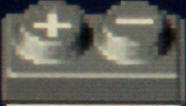 |
|
Clark Gellings and Kurt Yeager, in their article "Transforming the Electric Infrastructure" (PHYSICS TODAY, December 2004, page 45), propose "distributed energy resources" as part of the solution to transforming and modernizing the electric power infrastructure. They recommend "small generation and storage devices distributed throughout" the system, but suggest only "fuel cells and batteries" and offer no details of how the cells and batteries could be created economically or how they would be integrated. Much more appropriate devices already exist and are currently proliferating—namely, hybrid gasoline–electric vehicles, such as the Toyota Prius. Although nominally designed as transportation, hybrid vehicles normally perform that function for only an hour or so per day. The rest of the time they are small standby generator plants. With their capacious batteries, they could supply tens of kilowatts of instantaneous power to cover peak demands for electricity. The continuous power output of hybrids is several kilowatts, commensurate with the power required not just to drive down the highway but also to run a house. On the power-receiving end, vehicle "docking stations" with DC-to-AC inverters and transfer circuits could turn a house, a factory, or even a community into a self-sufficient entity. Although such facilities aren't free, their cost is much less than that of the typical power station and, if mass produced, might come in under $1000 plus professional installation. Given the many power emergencies and inconveniences during this past hurricane season, I can see at least one section of the country jumping at the opportunity. Consider what could be accomplished as the hybrid fleet size increases and its power is harnessed:
These benefits can be provided economically, given that hybrid vehicles are already being produced and purchased in record numbers. Cooperation from vehicle manufacturers is what is needed, primarily in including control software that will allow the batteries to provide power and be recharged through external instruction and power demand. That software, plus a power connector, should be sufficient on the vehicle. Neither should affect its cost noticeably. We're all accustomed to the necessity of installing an uninterruptible power source for each computer. Maybe it's time to consider installing a UPS for the house as well. Richard Factor Eventide
Inc |